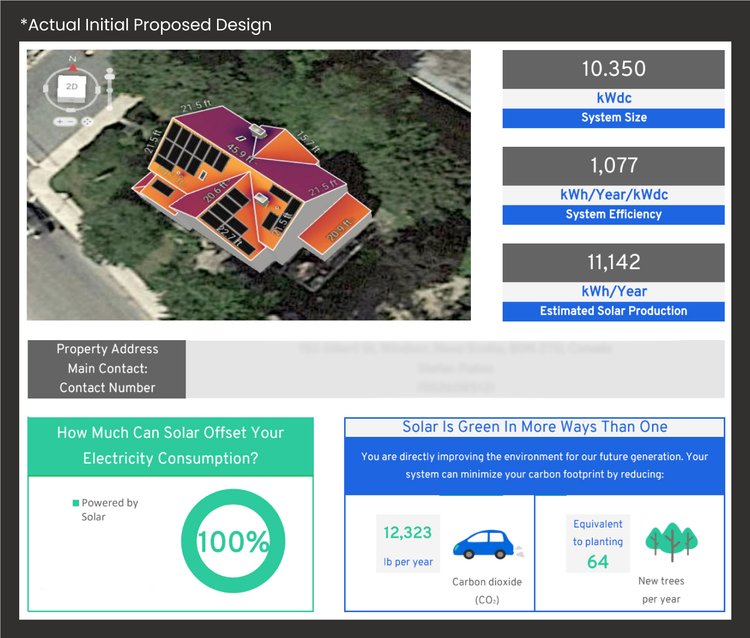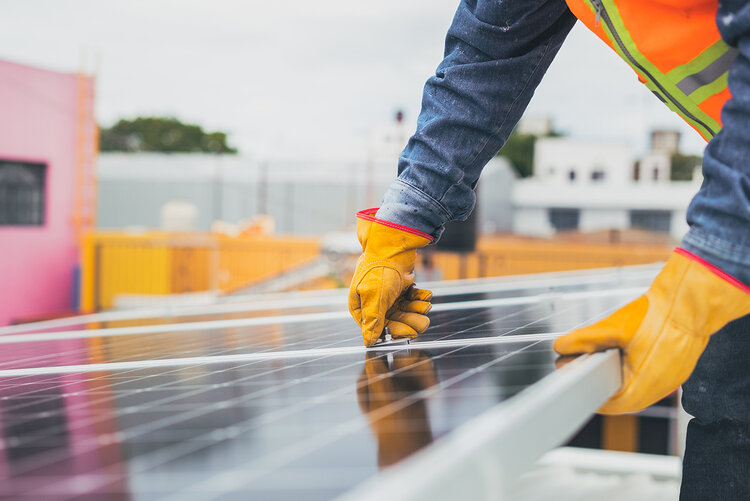By an anonymous homeowner
This story is written by a homeowner who went solar. These are solely his opinions, comments, and experiences. The contractor he worked with is NOT a Scanifly customer (but certainly should be).
Dear Contractors,
This is my experience going solar. Unfortunately, I hear this and read this all too often from friends and peers.
The solar industry needs to—and can—be better.
December 2021: It was so sleek!
We own a big, old Victorian home in a small town on the eastern seaboard of Canada. The home is heated primarily with oil, so we were eager to install both solar and electric heat pumps. Together, I believed we would save money because heat pumps reduce oil costs, and solar would reduce or eliminate the heat pump costs—in total, we estimated average monthly savings of nearly $400 (oil is expensive). Further, studies show that adding solar panels and heat pumps could increase the value of our home.
While researching Solar Contractors, I stumbled upon a very sleek ad promoting 0% interest financing on new arrays, so I reached out. A few days later a preliminary design promised a 100% offset – too good to be true?!

April 2022: Three months for a survey
We agreed to the design immediately, and the Contractor informed us they’d need to do an on-site survey to confirm measurements. This made sense because the satellite imagery is poor, and our house has many unique architectural characteristics
Then… nothing.
In February, I finally was contacted to schedule my survey… for April.
In April 2022, without prior notice, someone showed up at my house wearing a safety vest and asking to fly a drone. “For what?!” I asked. He said he needed a top-down photo of my roof to confirm measurements for our solar array.
September 2022: The final design bait and switch
Unfortunately, the April survey revealed that I needed a new roof in order to install the array. By September 2022, the roof was completed. We subsequently messaged the Contractor for a final quotation. A few days later, a 15-page mess of legalese contract arrived in my email.
There were two major issues: (1) Financing was offered at 4.75%, versus the advertised 0%, and (2) the offset was 84%, down from 100%.

Financing was “just a mistake,” said the Salesperson after I called him, who apologized and updated the agreement to 0%.
Unfortunately, though, the preliminary design ignored any shading from trees… despite the fact that trees are visible in the design. Further, the satellite measurements were about seven inches off, meaning the full array wouldn’t fit and they needed to move some panels to a less sunny roof plane. When I asked what could be done about it, they cheerfully told me I could pay another $3,000 to add more panels in the fully shaded areas of my roof—it would still produce a little bit from ambient rays, bringing offset up to maybe 90%.
I felt completely bait-and-switched.
To make a decision, I ran my own math and calculated an 84% offset would pay for the panels themselves, so it would become an inflation hedge against rising electricity prices. We decided to push ahead.
January 2023: Ignored until installation
After signing the contract in early October 2022, we were ignored again for three months.
In early January 2023, I got an email saying an installation crew would show up in 24 hours but that I didn’t need to be home. I thought… what? I know solar needs to be connected to the electrical box, so I made sure I was home. It turns out it was just the racking being installed.
A week later, I got a second email saying another crew was coming to my house. This time it would be for panel installation and box connection, so I needed to be home. Luckily, the weather cooperated, and the installers got the job done.
Later that month, the utility company did the final inspection and turned on the system without fanfare. The only email I got from the Contractor offered a generic “congratulations on my new system” and asked me to do two things: Pay the invoice and refer them to future customers.
What I wish I got from my Contractor
The panels were properly installed and, a year later, have not had a single issue. Production is lower than 84% at least in part due to far more clouds and rain than normal during the summer, so there’s hope for 2024.
But what irks me is all the zero-cost things that my Contractor didn’t do:
-
Proactive communication: I wish I had an overview of all the steps from start to finish so I knew what to expect. For instance, it’s apparently normal to install racking on a different day than panels, but how am I supposed to know that as a homeowner going solar for the first time?
-
A legitimate preliminary survey: Not including shade analysis was a massive bait-and-switch. I would expect a professional Contractor using satellite imagery to at least estimate some tree heights. It’s also easy to see fully grown trees on my property with Google Streetview, so it wasn’t fair for them to say they didn’t know. Ultimately, an onsite survey would have been to most accurate.
-
Honesty and transparency: Pushing 4.75% financing when advertising 0% is nearly criminal. I didn’t fall for this because I advocated for myself. But what if I hadn’t?
-
A holistic mindset: Tree removal is a fact of life in solar, yet they had no advice beyond “pay us more to build a bigger system.” A reference to a tree surgeon, for instance, would have been helpful.
I still see their ads on occasion. And I still think about how sleek and professional their marketing appears. Kudos to the agency that created them; I wonder if they know the frustration those ads have caused.
I’ll end with this: We’re passionate about going solar and happy we did. But sometimes, specific Contractors do things that leave a bad taste in your mouth about the industry as a whole. Solar can be better.






